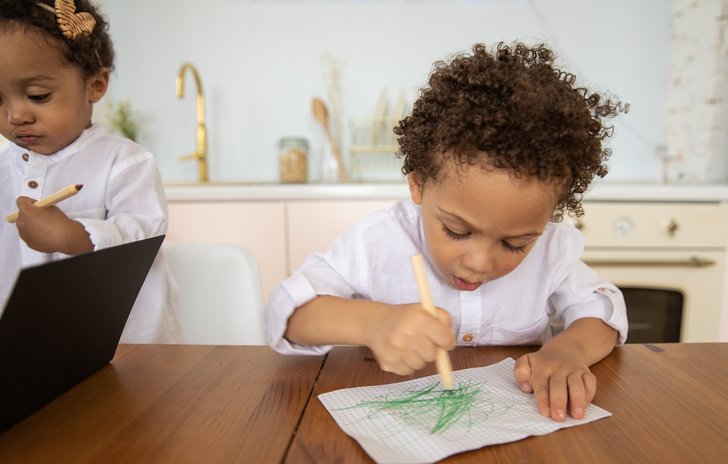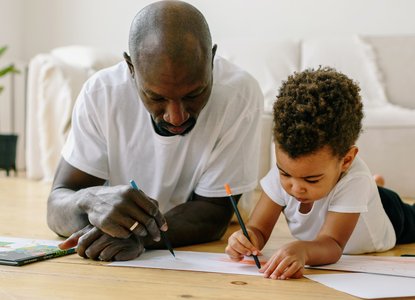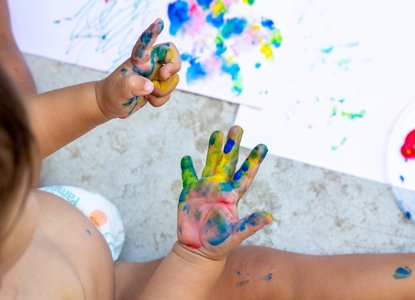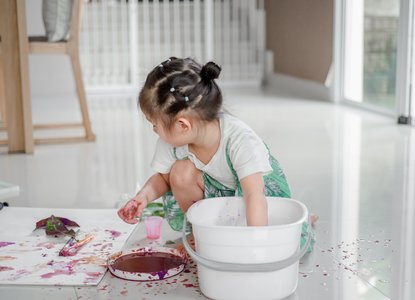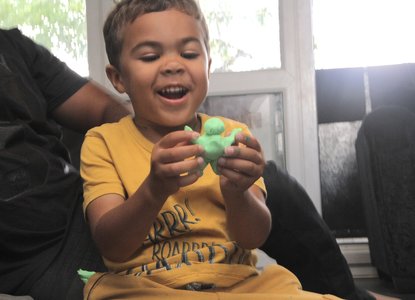Children can begin to experiment with making marks and drawing from a very young age. It supports the development of their creativity and imagination and is the start of their journey towards becoming a writer.
As with other areas of development, all children are different and their drawing skills will develop at different times, although their journeys are likely to follow a similar pattern.
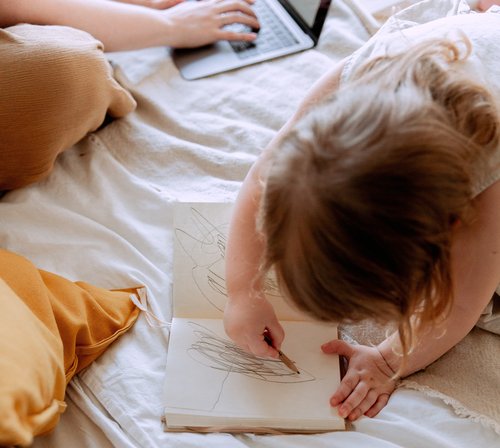
When will my child’s drawings develop?
- During their earliest experiences of drawing toddlers explore movement and learn about cause and effect, as they notice they can make marks.
- Later they will develop more control over the marks they make and will learn to create simple shapes and lines intentionally.
- Usually around three or four years of age, children will begin to give meaning to the marks they make, however at this stage their pictures may not be recognisable to you.
- Soon children will begin to draw people and other things that are important to them. As their muscle control and coordination develop, their drawings will begin to become more recognisable.
- As they get older children will add more detail to their drawings.
Every stage of development is important. Offering lots of opportunities to draw and giving lots of positive feedback will support your child to develop their skills.
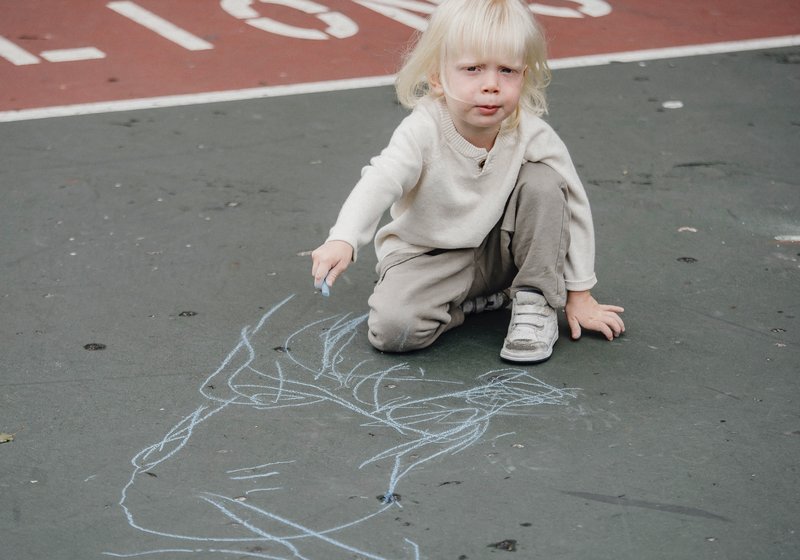
Don't worry if your child's drawings don't look like anything yet, focus on the process and the skills they are developing, rather than the finished outcome.
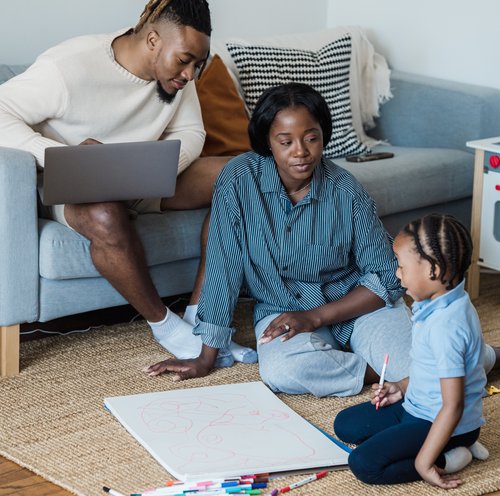
How can I encourage and support my child’s drawing?
- Find lots of opportunities for your child to experiment with making marks and drawing using different materials. For example, a stick in mud or sand, chalk on a pavement, water on a wall, crayons, pens, paint, etc.
- Provide other opportunities for them to develop their muscle control and coordination. For example, large physical activities such as climbing, running, jumping and playing with a ball, and fine motor activities such as playdough, building, posting and using a knife and fork.
- Sit alongside them as they draw and talk about what they’re doing. For example, I like the red colour you’ve used here, or that’s a very long line, it goes all the way to the top. Invite them to tell you about their drawing, rather than guessing what it might be.
- Make drawing materials available all the time so they can access them independently. You may need to develop some rules together, for example pens can only be used at the table, to avoid accidents.
- Allow your child to be playful and experiment, many children enjoy drawing because of the freedom it gives them, there is no right or wrong.
- Focus on the process, not the finished product. When you sit with your child as they draw you will notice their physical skills, decision making and thinking developing. Children's drawings often tell an ever-changing story as they draw, which may not match their finished work.
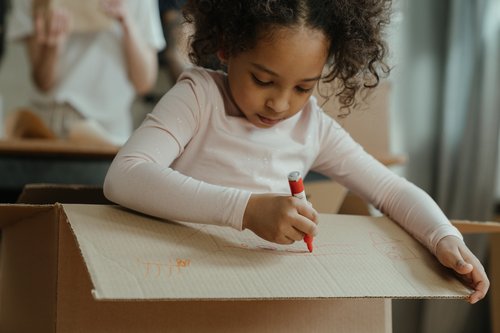
Drawing Activity Ideas:
Allowing children the freedom to draw and write what they want, and following their lead is important, but sometimes they might need a little encouragement or inspiration, so here’s some ideas to help get them started:
- Save large cardboard boxes for decorating, they can be made into a rocket, cave or house OR flattened out for large-scale drawing.
- Leave a small notebook and pencil alongside their play food/kitchen so they can make a shopping list.
- If they prefer to draw lying on the floor, offer them something to lean on.
- Make signs and labels for an obstacle course, seeds you’ve planted or place labels to show everyone where to sit when you have visitors.
- Use masking tape and paper or card to create a road for toy cars, or a path for play people and animals.
- Mix a tray of cornflour and water (add food colouring too) and make disappearing marks with your fingers together.
- Suggest they draw a plan or write some instructions to remember how to build a construction model.
- Draw and post a card for a family member.
- Draw a picture of someone or something (a favourite toy or pet) that’s special to them. Sit alongside them and help them notice the different features they will need to add, and the shapes that will help them.
- If they love being outdoors take a clipboard or notebook with you when you’re out and about or in the garden.
- Keep an eye out for rolls of wall paper at charity shops and car boot sales – it’s great for large scale painting and drawing.
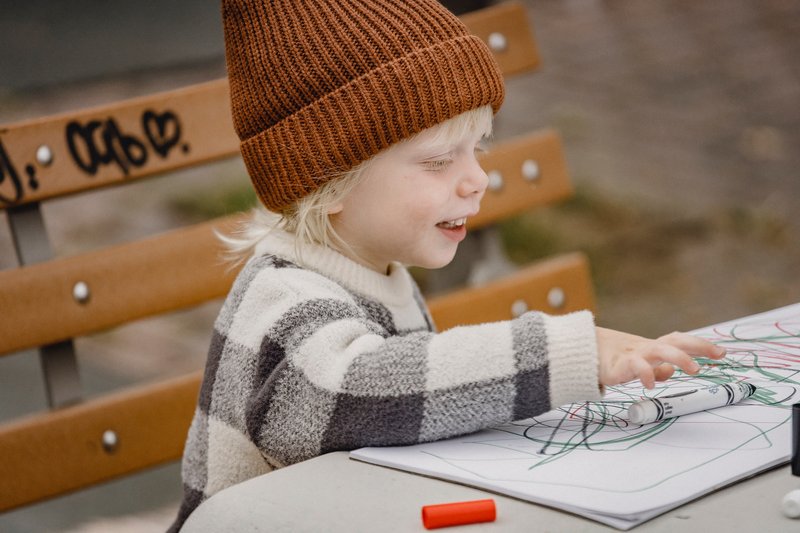
Did you know?
Asking open-ended questions about your child's drawing (such as tell me about your picture), encourages them to use longer sentences and will support their language development.
